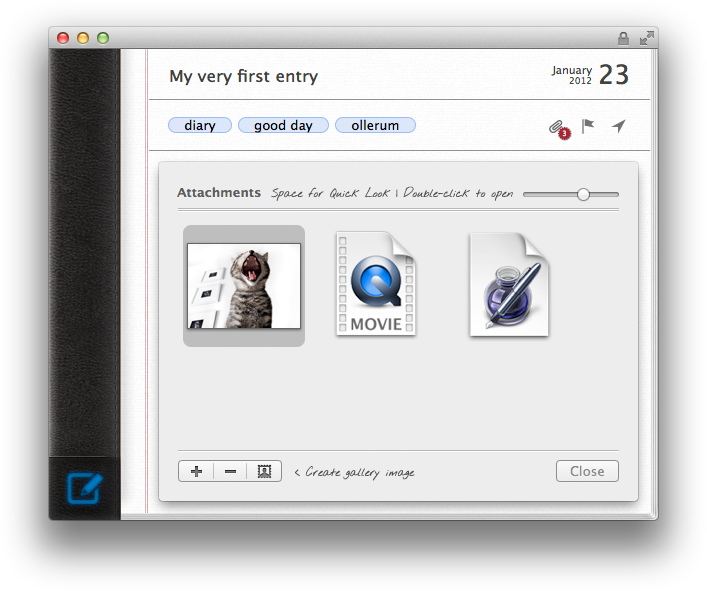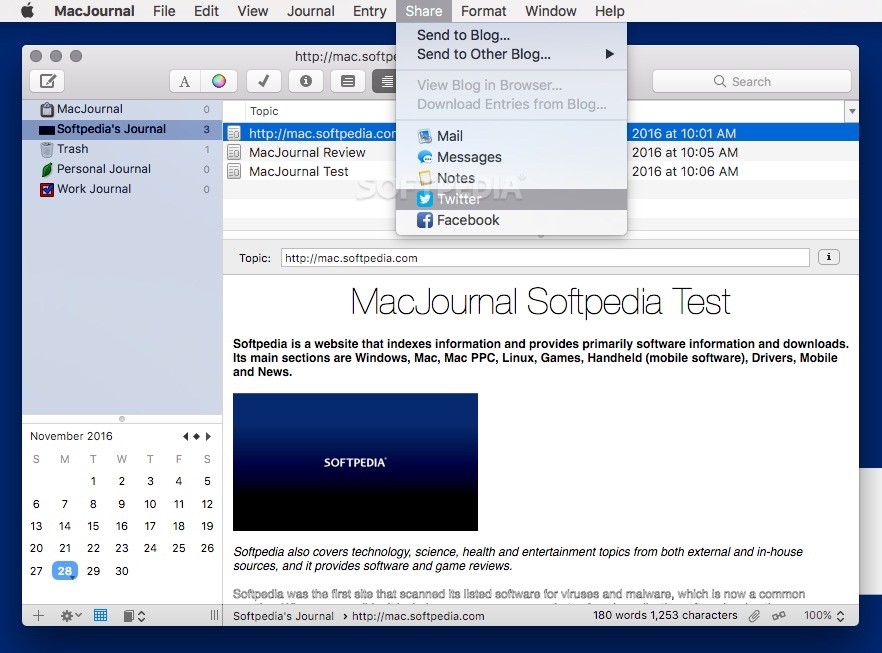
#Macjournal data update
For that reason no past entries can be considered definitive, and I find it easier to update them within the scope of a single document

(Nisus of course saves in rtf, which perhaps requires some translation at opening time?) Saving that way can certainly be a way to speed up loading.

Pages and OpenOffice save the file in their own dedicated formats, and Pages format causes the file size to balloon. Having said that, there are probably other points to consider. Switching to page view with Nisus is almost interminable (and seems to only work well if you first place the cursor at the beginning, so that it can 'start from the beginning').

What's more, both Pages and OO go directly to a page view. And it is true that Pages (but not OpenOffice, don't have Word) is somewhat quicker at opening this, than Nisus even in Draft view. I downloaded several novels from Project Gutenberg and combined them into a single file to get a 5 Mio character file (about 2000 pages). Size is tolerable up to a point, but one does have to wonder why it is important to keep this all in a single file, which you then want to use for daily editing.īut returning to the real question: I tried the following experiment. I don't have a lot of experience with files that size. You might switch to using Draft View for some documents. One final tip: Draft View's typesetting is a lot simpler because there's no need to consider pagination, footnotes, etc.

If the delay in a particular document seems inexplicably long, you might send us the file so we can see if there's anything amiss, or something we can optimize to speed the typesetting time in the future. That's just a partial list, but as you can see, there's a lot going on.
#Macjournal data windows
Preventing windows & orphans and enacting other layout options. Deciding where tables, floating graphics, footnotes, etc, should be placed and then wrapping text around them.ĥ. Calculating the way lines of text are laid out on the page, and wrapping them based on the margins, indents, etc.Ĥ. Taking text character codes (ie: Unicode) and mapping those to glyphs in the final display font.ģ. Calculating the final displayable formatting for each bit of text, eg: combining paragraph styles, character styles, and attribute overrides.Ģ. There's a lot to that, but here's a rough overview of some of what goes on:ġ. Hi Ken: typesetting is the process by which your document's content is prepared for display on screen.


 0 kommentar(er)
0 kommentar(er)
